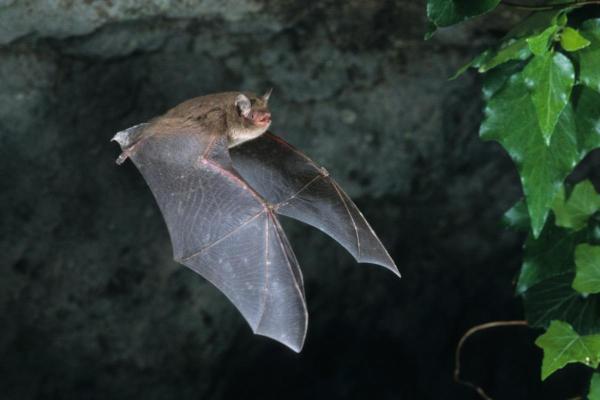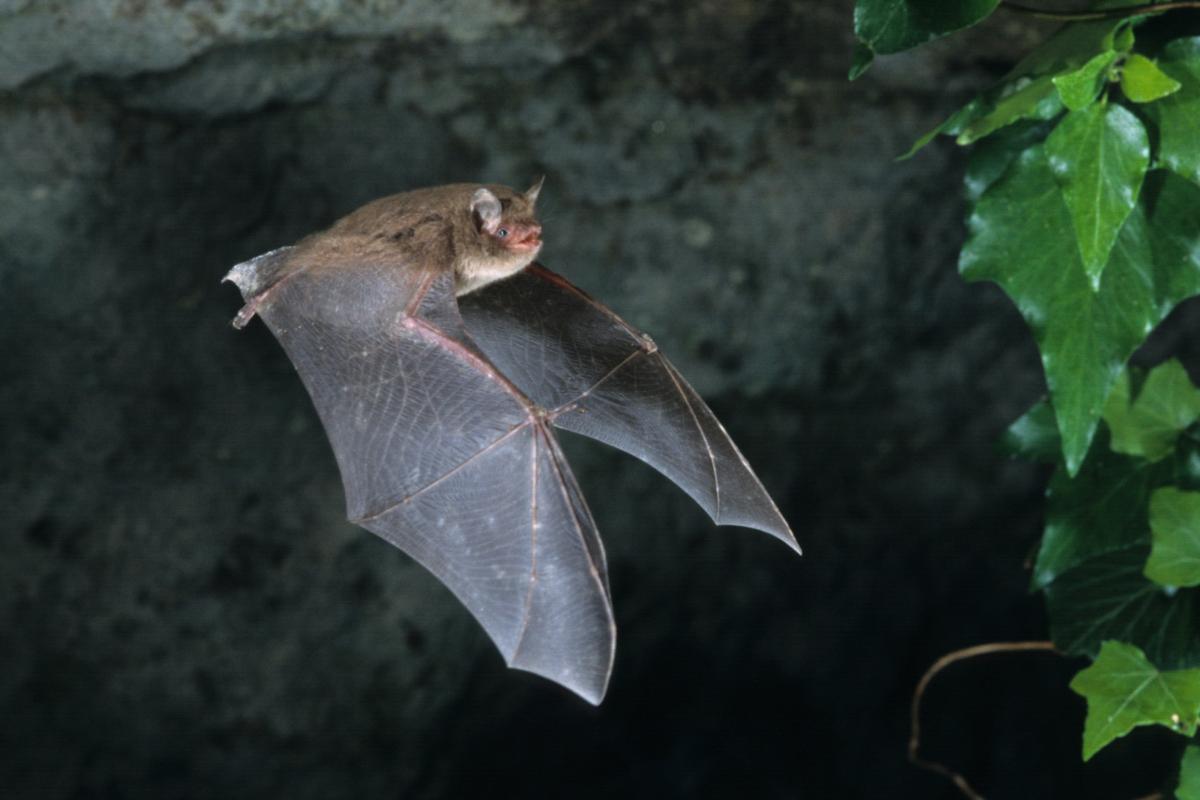Why Is a Bat a Mammal and Not a Bird?


In the vast realm of the animal kingdom, some creatures defy classification with their unique traits. One such enigmatic creature is the bat, a fascinating winged creature that often sparks the question: Is it a bird or a mammal? While its ability to fly may draw parallels to birds, the classification of a bat as a mammal is firmly rooted in its biological characteristics.
In this article from AnimalWised, we will unravel the reasons why a bat is classified as a mammal and not a bird. We delve into the distinctive features, evolutionary history, and reproductive methods that set bats apart from their avian counterparts.
Is a bat a mammal?
Yes, bats are indeed mammals. They belong to the taxonomic class Mammalia, which includes animals characterized by features such as being warm-blooded, having mammary glands that produce milk to nourish their young, and possessing hair or fur on their bodies. Bats share these mammalian characteristics, along with other specific adaptations that make them unique within the class.
Bats hold a taxonomic classification within the order Chiroptera. It is worth noting that this order has undergone a recent revision, resulting in the division of bats into two distinct groups: Yinpterochiroptera and Yangochiroptera, replacing the previous suborders of Megachiroptera and Microchiroptera. In simpler terms, these groups are commonly referred to as megabats and microbats, respectively.
Bats exhibit a plethora of distinctive traits that contribute to their fascinating nature. For instance, they represent an exceptionally diverse group, accounting for a staggering 20% of all mammal species. Second only to rodents in terms of population, bats have secured their position as the second-largest group within the mammalian world.
Within the realm of bats, we encounter some of the smallest mammalian species known to humanity. One such example is the Kitti's hog-nosed bat, also known as the bumblebee bat (Craseonycteris thonglongyai). Despite its diminutive size, this species stands as a testament to the diversity within the bat family.
Another notable characteristic of bats is their remarkable echolocation ability. This unique skill has also evolved independently within the bat group. However, it is important to note that not all bats rely on echolocation. Its significance varies depending on the dietary preferences of each species. Bats that prey on insects, rodents, and other vertebrates greatly benefit from this sensory adaptation. Conversely, those that primarily consume nectar and fruit do not require this particular ability.
Are bats the only flying mammal?
What truly sets bats apart is their extraordinary ability to fly. Among mammals, they stand alone in possessing this remarkable skill, often surpassing birds in terms of aerial prowess and maneuverability. Remarkably, this flying capability evolved independently in bats, making it a truly unique feature not shared with any other animal group.

Is a bat a bird?
Despite both having wings and the ability to fly, bats are not birds. While both belong to the group of vertebrates and have forelimbs adapted as wings, there are significant differences between these two animals.
One notable distinction is the structure of their front limbs. Bats have wings supported by four elongated fingers covered in skin, whereas birds typically have wings supported by a structure comprised of feathers and the fusion of their wrist and two fingers.
Additionally, bats often have a flight membrane called the patagium that extends along their bodies and can even connect to their hind limbs, sometimes accompanied by a membrane on their tail known as an uropatagium. Birds lack these extensive membranes, and their wings develop independently without connecting tissues along their bodies or hind limbs.
Furthermore, the anatomy facilitating flight differs between bats and birds. Bats possess a well-developed thoracic region where the flight muscles are inserted. This, along with the structure of their shoulders and thorax, helps maintain the animal's center of gravity and enables highly efficient flight.
Conversely, the posterior region of a bat's body is relatively smaller, and their hind limbs are typically short and small in comparison.
Birds exhibit various anatomical adaptations for flight. Some flying birds possess a structure called the keel, where flight muscles are well-developed and inserted. However, there are also birds without a keel, featuring a flat sternum that inhibits flight. Regarding hind limbs, birds display variations, ranging from species with long limbs in relation to their bodies to those with more proportionate leg length.
Don't miss this other article where we explore the different types of flying mammals.
Do bats lay eggs?
No, bats do not lay eggs. Bats are mammals and, like other mammals, they give birth to live young. They are viviparous, which means that the female bat carries the developing embryos inside her body and gives birth to fully formed pups. After birth, the mother bat nurtures her offspring by nursing them with milk produced by her mammary glands. This reproductive method is one of the defining characteristics that classify bats as mammals.

Why are bats mammals and not birds?
Bats are classified as mammals rather than birds due to several fundamental characteristics that define their taxonomic classification. These characteristics include reproductive methods, physiological features, and evolutionary history. Let us take a closer look at some of them:
- Dental structure: bats possess teeth, allowing them to bite and chew their food, a feature absent in birds. Unlike birds, bats have evolved specialized teeth adapted for their specific dietary needs.
- Forearm anatomy: the main bone of a bat's forearm is the radius, which, along with a well-developed ulna, supports the radiating fingers forming their wings. In contrast, birds exhibit less developed forearm bones, particularly the ulna and what would be the fingers. This difference in bone development contributes to the more intricate wing structure found in bats, aligning more closely with mammalian anatomy.
- Presence of hair and sweat glands: bats exhibit two distinctive mammalian traits: hair and sweat glands. Hair provides insulation and aids in various sensory functions, while sweat glands enable them to regulate body temperature. Birds lack both of these structures, being characterized by feathers that serve different purposes compared to hair.
- Reproductive methods: bats are viviparous animals, meaning they carry their young within their bodies until birth. They nourish their offspring with milk produced by mammary glands, a defining feature of mammals. In contrast, birds are oviparous, laying eggs that they incubate for a period until hatching. While exceptions exist in the form of monotremes like the platypus and echidna, which are egg-laying mammals, bats typically exhibit the reproductive traits associated with viviparous mammals.
- Nursing behavior: after giving birth, female bats nurse their young, providing them with essential nutrients through their milk. This parallels the nursing behavior seen in other mammals. In contrast, birds feed their chicks regurgitated food or secrete nutrient-rich substances from their crop, sometimes referred to as "crop milk." However, it is important to note that this "crop milk" is not dairy-based and differs in composition from mammalian milk.

If you want to read similar articles to Why Is a Bat a Mammal and Not a Bird?, we recommend you visit our Facts about the animal kingdom category.
- ITIS. (2023). Chiroptera . Available at: https://www.itis.gov/servlet/SingleRpt/SingleRpt?search_topic=TSN&search_value=179985#null
- Donegan, K. (2002). Struthio camelus . Animal Diversity Web. Available at: https://animaldiversity.org/accounts/Struthio_camelus/
- Wund, M.; Myers, P. (2005). Chiroptera . Animal Diversity Web. Accessed June 14, 2023 at https://animaldiversity.org/accounts/Chiroptera/








